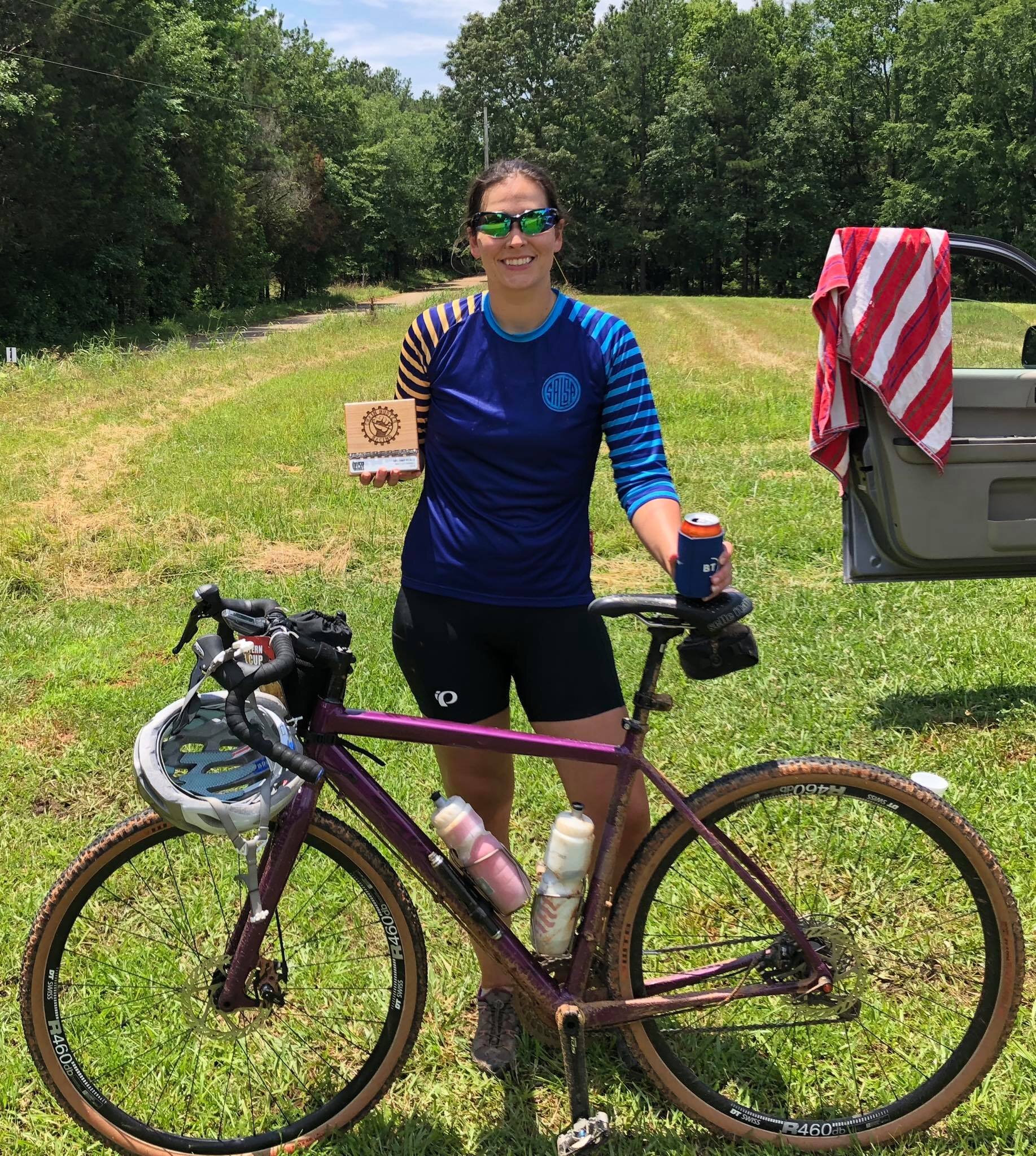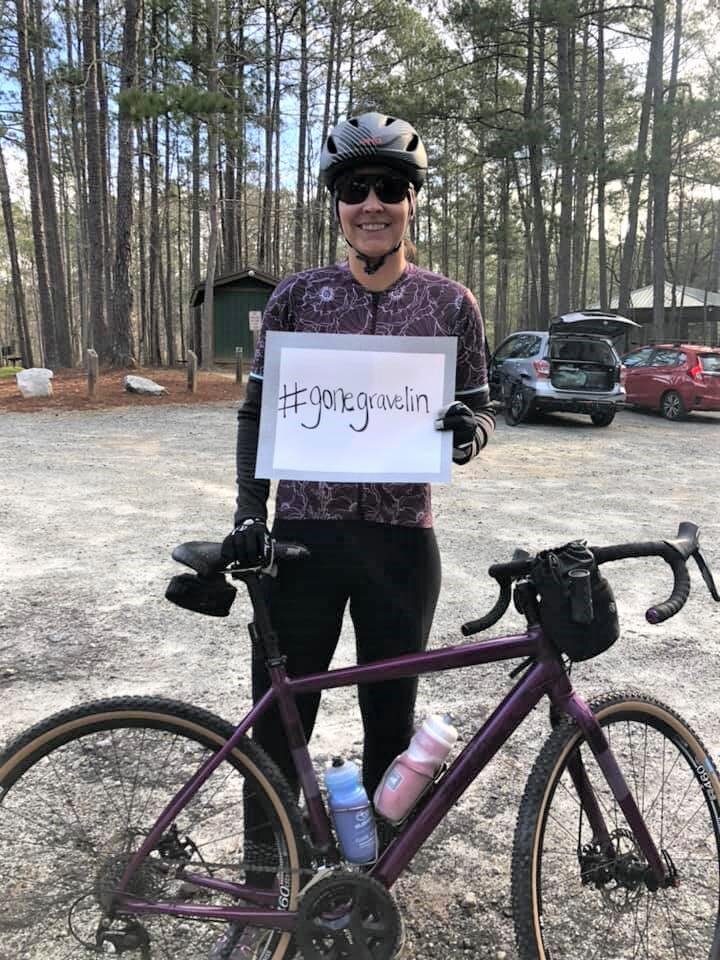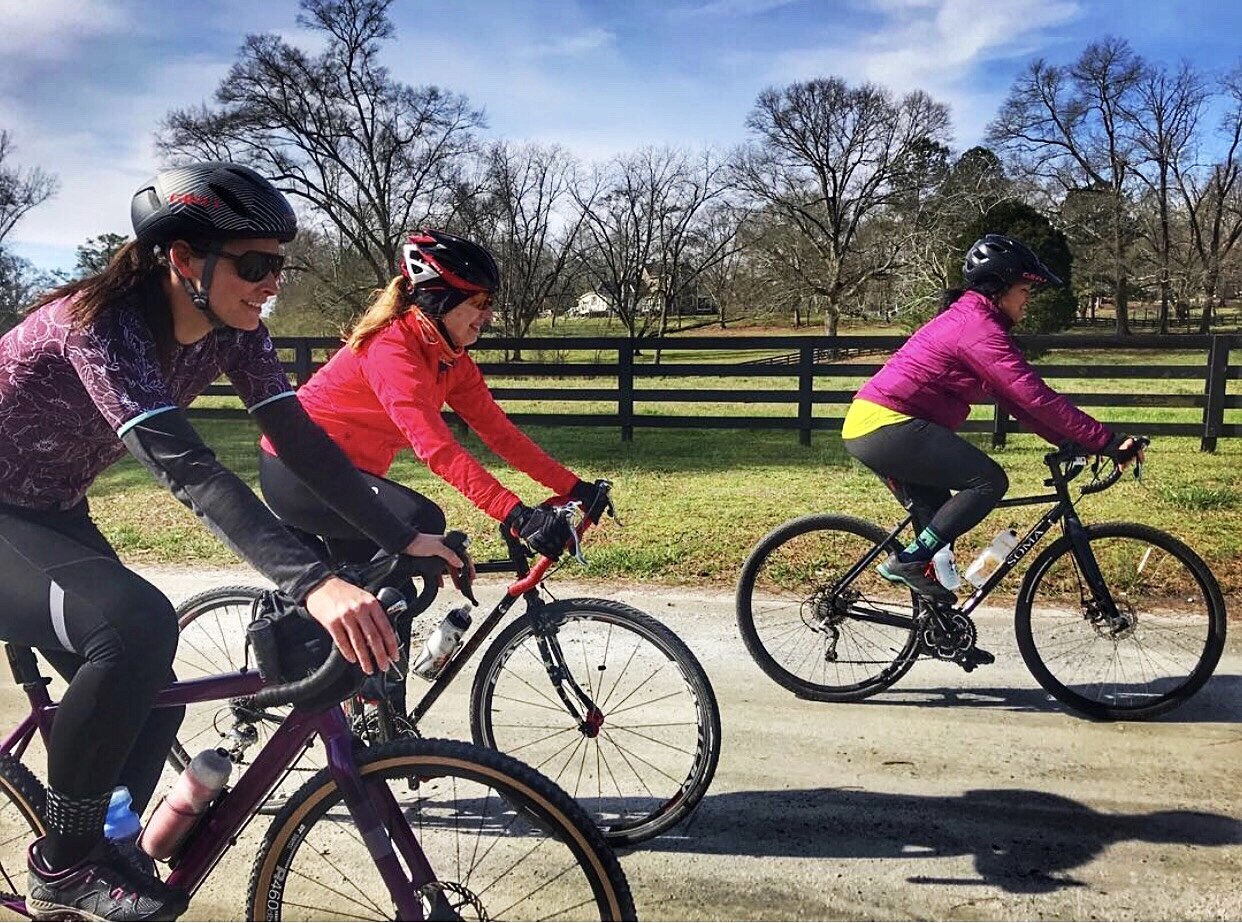Things I Wish I Knew About Training Before My First Gravel Race
For a lot of us right now, our races are being canceled or postponed left and right, and there’s a lot of uncertainty about what the future holds and when we might get to race. But I still want to share some training tips that I wish I knew before I started training for my first gravel race because now is actually the perfect time to start training for a late summer or early fall race, and hopefully Covid-19 will be at least somewhat of a distant memory by then!
Here in the U.S., even in places where there are “stay at home” orders in place, riding (and running) outside is still OK, provided you’re smart and maintain good social distancing practices. With so many things feeling out of our control right now, focusing on training and maintaining consistency is giving me something else to think about in all this chaos, so I would encourage you to do the same! And remember, don’t underestimate the importance of mental health in all of this; try to get outside every day if you can and get some fresh air and vitamin D!

Before we get started — If you’re brand new to riding in general, then the best thing you can do for your fitness is just to ride and ride often! This post if more for people who’ve been riding for a little bit, but maybe have plateaued in their fitness or have been riding recreationally, but aren’t sure how to train for a race.
Ok, here we go. This is a pretty long post, so we’ll start with the highlights and then get into the nitty-gritty.
The two basic principles are: go long and go hard, but not at the same time. Meaning, that there are two types of bike workouts that you should be doing each week if you want to get faster: 1) a short, punchy ride with hard intervals, and 2) a long, endurance ride. Yes you should ride more often than that, but more on that later; you should also incorporate strength training into your plan.
THE SHORT, PUNCHY RIDE
The short, punchy ride can be anywhere from 30 minutes to an hour and includes some really hard intervals. I know 30 minutes doesn’t seem like much of a workout when you’re training for a 50, 100, 200, or even longer race, but it’s a good place to start and really will help improve your overall bike fitness & strength.
Example — Warm–up: 10 mins, followed by 5 sets of 1-min all-out hard effort in the toughest gear (preferably your hardest if you can), with a 3-minute spin in your easiest gear in between, Cooldown: 5 mins = 35 mins
Once you’ve done this for a few weeks & if it starts to feel too easy, then you can extend the warm-up and cool down, add more hard-gear intervals, or slowly increase the interval duration, eventually working up to 5 minutes at a hard effort (that you can sustain for the duration). If you don’t feel fully recovered between sets with the 3-minute rest, then increase the recovery to 5 minutes.
Err on the side of starting slow; trust me, you’ll still be getting a great workout from 30 minutes. This workout will help improve your top-end strength (power) threshold on the bike and improve your ability to suffer at higher levels of exertion.
A lot of people do these types of rides on an indoor trainer or stationary bike b/c you can control all the variables, but you can still do it outside if you don’t have a trainer (most beginners probably don’t) or access to a stationary bike. You’ll just need something to keep track of time and a long stretch of trail or quiet road.
This same type of workout could also be accomplished on a mountain bike ride — which is what I like to do sometimes to mix things up — provided there are some good climbs to make you work for the downhills!
THE LONG, ENDURANCE RIDE
This is the most important thing you need to do every week: the long ride. But it’s got to be at a pretty easy pace and effort. It should be easy enough that you could carry on a conversation with a friend. Don’t worry about it being too easy because it’s also going to be long, and continue to get longer & longer! The idea here is that you’re slowly building up your long-distance endurance by going a little longer than you’re used to, and then a little longer the next week, and so on until you reach your race mileage or more. (Note: you don’t have to ride the full race distance before the race, but it’ll be a nice confidence booster if you do & it’ll also make the race seem more manageable).
If your first gravel race is a big one like DK 200, then you’re probably not going to ride more than that during training, for a number of reasons, but that’s OK. If you’re riding regularly during the week in addition to building up your long ride, then you’ll be fine. It’s a good idea to try to have at least one really big day before the race (maybe 70%-80% of the race distance). If you can physically ride 150 miles, then you can physically ride 200 miles… it becomes more of a mental game at that point. It’s also a good idea to find some shorter races leading up to it to test your mental and physical stamina before launching into 200 miles! Everyone has a tendency to start too hard on race day, so shorter races will teach you about pacing and are also a good way to test your nutrition plan.
So how long should you go? It really depends on where you’re starting out. If you’re able to comfortably ride 15 miles without stopping, then next time out go 20 miles, then 25, then 30, etc — BUT EASY! If you’re riding during the week & also doing the punchy ride with hard intervals, then your muscles are going to quickly build up the strength to keep adding time and distance, and you’re going to be able to add the distance relatively comfortably.
The long ride helps build up the efficiency of your aerobic system — your fat burning, endurance zone — so it can’t be too hard or your body will be pushed out of its aerobic system into its anaerobic system & you won’t get the same aerobic benefits. Most gravel races are pretty long and you’re going to want to be comfortable sitting in the saddle for long periods of time! Doing a long ride every week will help you physically, and mentally, be able to sit on your bike for hours and hours.
This ride is best done outdoors for two reasons. One — because spending that much time on an indoor trainer is just brutal (and boring IMO). I max out at about 2 hours, but I know others who have no problem sitting on a trainer for 4+ hours. Two — riding outside requires more balance and feel for the road than riding on a bike mounted on an indoor trainer, especially when it comes to gravel! There are some products you can get that help mimic outdoor road riding a bit better (Saris has one, but it’s pricey!), but when you’re starting out, it’s best to just get outside if you can.
HOW DOES IT WORK?
It’s really all about heart rate zones & training in your proper heart rate zones. If you really want to know more about the science behind it, then I suggest looking more into the 80/20 approach, or Phil Maffetone’s work, which is essentially what this is. I do train with a heart rate monitor and using my specific heart rate zones/targets now, and we could get into HR zones and all that, but it’s really not all that necessary when you’re starting out.
It can be done by feel (or perceived exertion). You don’t really need to spend money on a heart rate monitor and fancy watch if you’re new to the sport. If you do have one, then great! Click here and here for some resources if you want to really get specific and learn your heart rate zones and how to train with heart rate.
Also, you should plan on recovery week every 3 to 4 weeks or so depending on how you’re feeling. If you’re totally wrecked when you get to the 3rd week of training, then scale it back (but still get out and ride — consistency is the key to endurance fitness!) and then see how you feel. If you’re feeling good, you can increase the mileage again (or time if you want to track your workouts in time) a little bit. But again EASY! I know I’m saying it a lot, but most people default to a pace & effort that’s comfortably hard, but not easy enough to get the aerobic benefits. Even top-level athletes can’t sustain weeks and weeks of hard effort without a little rest!
STRENGTH TRAINING
I know I know, strength training isn’t as fun as riding. But it’s one of the best things you can do for your body, even if you stop riding or miss a ride. Don’t believe me, read this. Most of us sit at a desk all day and our bodies just aren’t able to properly adapt to all the hard training we throw at it. Your body will respond better if you’re also doing some kind of functional strength training & cross-training several times a week. It’ll help improve fitness faster and help keep you injury-free. What more could you ask for!?
JUST TWO RIDES A WEEK?
So, no, not really. You should probably ride more than twice a week if you’re training for your first long bike race, be it a century or something a bit longer or shorter, but at least those two rides should be included in your planning every week.
There isn’t really a magic number of how many times you should ride. Like I said earlier, If you’re SUPER new to riding, then just riding as much as you can is going to be the best way to improve fitness & efficiency, and if you add in the long ride and the punchy ride, then you’ll get the finish line of your race feeling much better than if all your training was “just riding.”
If you’re also into CrossFit or running or Yoga, then let those workouts be extra cross-training for your riding, but still try to get in a couple of other rides — maybe bike to yoga! The other rides can be pretty easy too, it’s more about time in the saddle; every ride doesn’t have to be hard (in fact it shouldn’t be!).
What you really want to do is focus on is building weekly mileage. Especially if you’re starting out, the best thing to improve your cycling fitness is just time. The more you ride, the fitter you’ll be & the easier it’ll become, so your other rides can just be easy rides, even if it’s just adding a few miles here and there by commuting to work or biking to dinner or whatever, as long as one of them every week includes some really hard intervals and one is a long ride.
Also, make sure you’re giving yourself a day off of hard training every week!

WHAT IF YOU DON’T HAVE THE TIME?
I get it, we all lead really busy lives these days! But in this time of coronavirus, social distancing, and working from home, finding time to ride should be easy! It’s still allowed & it’s good for your overall well-being and physical & mental health!
But if you’re really strapped on time, some people will recommend focusing all of that time on the high-intensity workouts, but HIIT workouts alone will not build your aerobic base. You really need to pair those workouts with the long, slow stuff. You just do. Your body needs to practice being more and more efficient at a lower heart rate for longer periods of time, and that’s what it’ll get out of the long rides.
I would suggest sitting down with your significant other and explaining to them what your goals are and why cycling is important to you. Then work together to find one day a week that’s “your” day, where you can just go ride (your long endurance ride!) — by yourself or with friends (6 feet apart!) — and have lunch or a beer afterward and aren’t expected to also keep up with soccer practice or sleepovers or even check in every hour or whatever. It’s your day, and the long endurance ride is really going to be the most bang for your buck workout you can do. You’ll still have to find other times to ride as well, but it’s usually the long rides that have partners questioning why you need to be gone for 5+ hours!
If you’re single and don’t have kids and don’t have a sick parent or pet to take care of, but still can’t find the time to ride, then just do it and stop making excuses because I don’t believe any of them. If you really look at your schedule and calendar, then you can find several hours SOMEWHERE in your week… maybe it’s less shopping, less Netflix, less partying, getting up earlier, whatever, it’s there. You only have to ride long once a week, so be honest with yourself.
GROUP RIDES

You might be asking where your weekly group ride fits in. Well, it depends! If your group rides follow more of a “party pace” approach, then that works, as long as you’re going long, then consider that your long, endurance ride. If it’s on the shorter side, then still try to get in a long ride somewhere in the week.
If you’re struggling to keep up with the group and constantly fighting getting dropped (or getting dropped) or there are tons of hills, then that’s a more intense ride. Try to make your other rides that week very easy to balance that out and allow your body some active recovery time.
SUMMARY
Here are the main workouts you need to do every week to train for your first long-distance gravel race (or maybe even your second race if like me you botched the training for your first race):
- The short, punchy ride with very high-intensity/hard intervals. The overall ride can be anywhere from 30 minutes to an hour; the intervals should start at 30 seconds and build from there, with enough rest time in between sets for your heart rate to recover.
- The long endurance ride. Go long, go easy, every week. Add mileage slowly working up to your race distance, or close to it, and allow yourself to have a recovery week every 3-4 weeks or so, depending on how you feel. Still ride during the recovery week, but you can cut back the mileage.
- Strength Training. You gotta do it. It doesn’t really matter what you do as long as you‘re adding some element of strength work several times a week to supplement your riding. But this doesn’t just mean going to the gym and lifting super heavy weights; there should be a structure and plan.
- Other rides during the week. You should ride more than twice a week! But the other rides can be easier commutes or riding around town or grocery shopping, etc. Just something to get your legs moving, blood flowing, and add to your weekly mileage.
That’s it! Happy riding, ladies!


